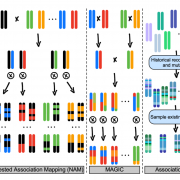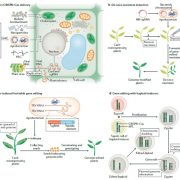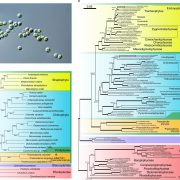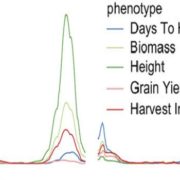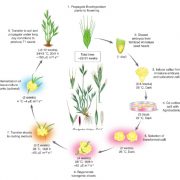De novo assembly of a new Solanum pennellii accession using nanopore sequencing
 Chromosomes are long, and DNA sequencing reads have typically been short, meaning that it is necessary to assemble lots and lots of short reads by looking for overlapping sequences. This strategy is made more difficult in repeat-rich and transposon-rich regions of genomes, which characterize many plant genomes. The development of single-molecule sequencing like PacBio and Nanopore technologies provides a partial solution to that problem, by providing a backbone onto which these short reads can be mapped. Schmidt et al. took advantage of nanopore sequencing to sequence a new, resiliant accession of the wild tomato Solanum pennellii. The authors summarize, “Taken together our data indicate that such long read sequencing data can be used to affordably sequence and assemble gigabase-sized plant genomes.” Plant Cell 10.1105/tpc.17.00521
Chromosomes are long, and DNA sequencing reads have typically been short, meaning that it is necessary to assemble lots and lots of short reads by looking for overlapping sequences. This strategy is made more difficult in repeat-rich and transposon-rich regions of genomes, which characterize many plant genomes. The development of single-molecule sequencing like PacBio and Nanopore technologies provides a partial solution to that problem, by providing a backbone onto which these short reads can be mapped. Schmidt et al. took advantage of nanopore sequencing to sequence a new, resiliant accession of the wild tomato Solanum pennellii. The authors summarize, “Taken together our data indicate that such long read sequencing data can be used to affordably sequence and assemble gigabase-sized plant genomes.” Plant Cell 10.1105/tpc.17.00521


